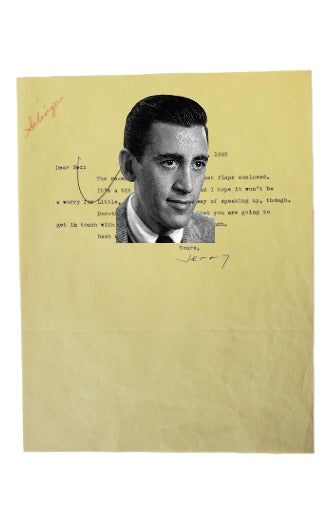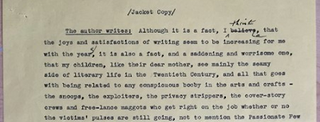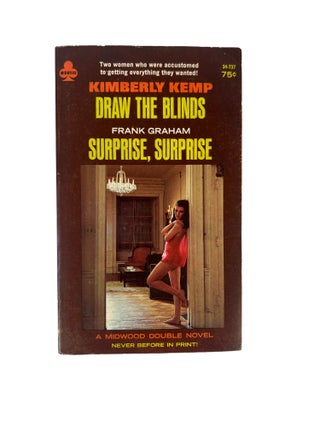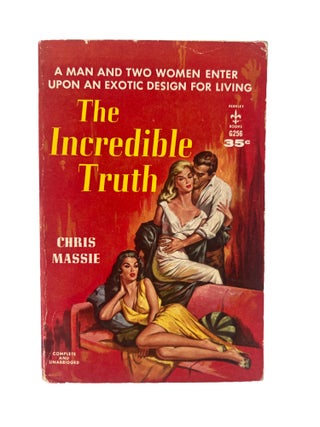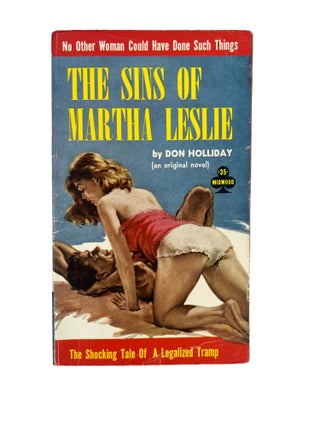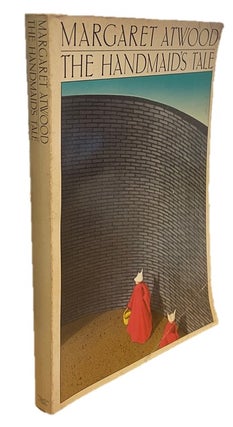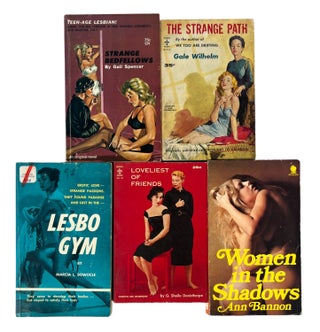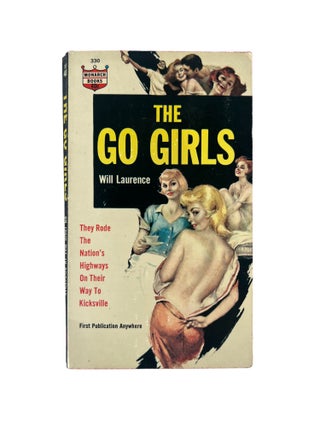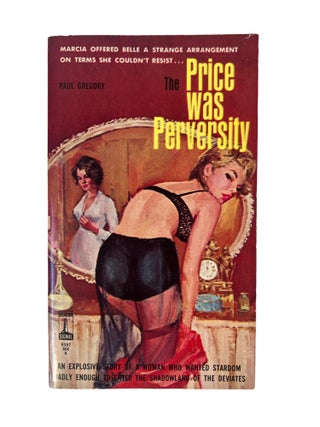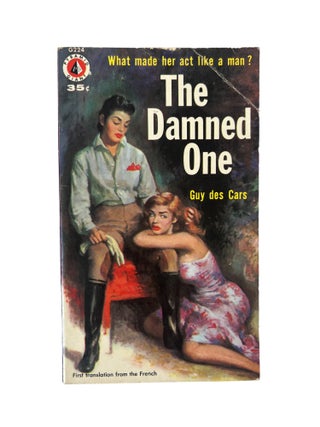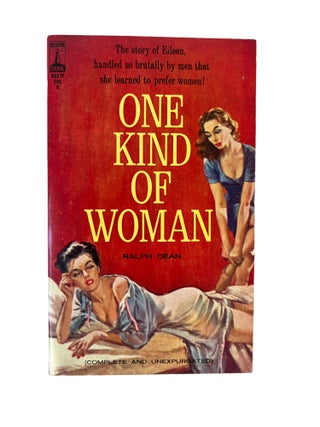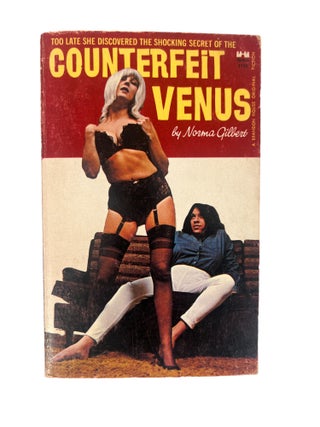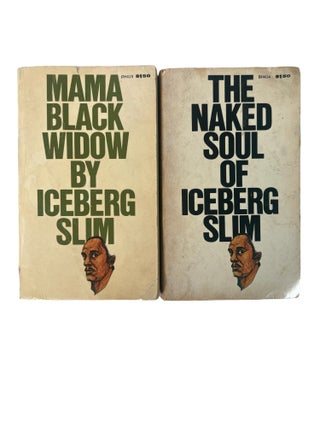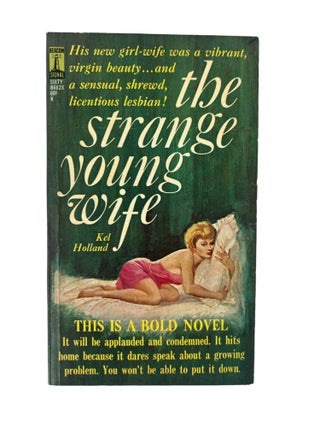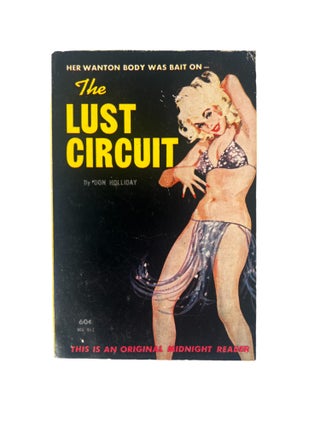J.D. Salinger Letter Signed, On Several Works Including Franny and Zooey and Catcher, and also Comes with Annotated and Unpublished Draft for the Dust Jacket of Raise High the Roofbeams
ALS : Autograph Letter Signed
Salinger, J.D. [Jerome David]. Typed letter signed by J.D. Salinger as “Jerry” with an accompanying, unpublished Hand Annotated typed draft for the dust jacket for Raise High the Roofbeams, Carpenter and Seymour: An Introduction. Dated Sept. 10, 1962.This letter is part a correspondence between Salinger and his publisher at Little, Brown regarding the dust jacket copy for his last published anthology Raise High the Roofbeams, Carpenters and Seymour: An Introduction. Salinger's fame exploded after publication, and he soon found he had become too recognizable a figure to continue living in New York City and maintain any semblance of privacy. He moved to rural Cornish, New Hampshire, but he was still pursued by media and fans alike. In a letter sent just one day earlier, Salinger asked for “somebody at your office to write [Lotte Jacobi] a letter of protest” and ask her to stop circulating a photo that she had taken of him for the first edition cover of Catcher in the Rye. (copy included). The famous author's requests to stop the circulation of his photo was a high priority to Little, Brown, as by the time of this second letter, just one day later, his literary agent had informed Salinger that the publisher is taking care of the matter: "Dorothy [Olding, Salinger's agent] told me on the phone that you are going to get in touch with Lotte Jacobi. Thanks very much."
Salinger also includes a new draft for the dust jacket for Raise High the Roofbeams, Carpenter and Seymour: An Introduction. The draft was typed by Salinger and also includes a correction in his hand. In this new draft of the jacket copy, he writes:
"I think that the joys and satisfactions of writing seem to be increasing for me with the years…" yet goes on to list some of the pitfalls of literary success—and complains again about the violations to his privacy by the “snoots, the exploiters, the privacy strippers…and free-lance maggots who get right on the job whether or no the victims' pulses are still going…"
He clearly understood the extremity of his words, for the purpose of a dust jacket, yet explains to Kelly in these letters that (since he avoids media) it is his only channel for expressing his true feelings: "It's a bit torrid, in spots, and I hope it won't be a worry for Little, Brown. It's my only way of speaking up, though." Salinger's publisher always stood by their star author; however, a highly sanitized version of these drafts, containing none of his sentiments on publication or privacy, was printed on the final jacket.
In our letter Salinger also writes about his upcoming publication, although he prefers to call it by a different name, "I strongly prefer to speak of the two stories in this book as just being slipped into hard covers together for the first time." "Both Stories," as Salinger explains in the draft dust jackets, "are concerned with Seymour Glass, the chief character in my still-uncompleted series about a rather average American family of Sappho buffs, vaudevillians, poets, actors, writers, avaivartakas, and somewhat widely-alleged retreaters from "reality" -- the Glasses. Both stories originally appeared in The New Yorker - RAISE HIGH THE ROOF BEAM, CARPENTERES in 1957, SEYMOUR - An Introduction in 1959." In the draft jacket he also differentiates these stories from his previous publication as well, he writes "Certainly not paired off, as FRANNY and ZOOEY no doubt were."
He mentions the impending publication of further work as well. "It seems to me that I'd better hurry up and do it [publish] if I intend to avoid undue and undesirable collision with new material." Salinger ultimately found the process of publication too painful and never released any new material, and the final dust jacket version is brief, including only Salinger's synopsis of the book and his hint at future publications to come. Therefore, the majority, and unquestionably the most interesting part of these drafts remain unpublished, and unknown except through these original pages from his own typewriter, to which he has made changes with his own pen.
Item #16174
Price: $15,000.00
See all items by J. D. Salinger

